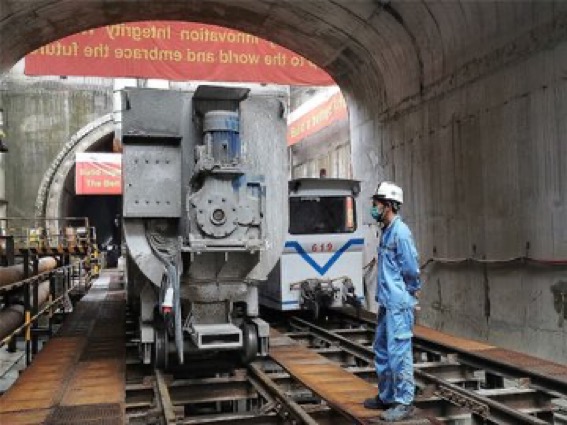I took my first high-speed rail trip in China in 2015. Both the clean and comfort carriages and the convenient services impressed me very much.
Since then, I’ve been hoping that Indonesia can build its own high-speed rails and that I can personally take part in the construction. Therefore, when learning the open recruitment of the Jakarta-Bandung high-speed railway undertaken by the Power Construction Corporation of China (POWERCHINA), I signed up at the first opportunity and fortunately became an employee of the company in Feb. 2017. At present, I translate and manage Indonesian employees at the first work area of the first division of the Jakarta-Bandung high-speed railway project. Besides, I also join external coordination affairs.
The Jakarta-Bandung high-speed railway is a signature China-Indonesia joint project under the Belt & Road Initiative. Upon completion, it will reduce the travel time between the two places from 3 hours to 40 minutes.
My work area is responsible for constructing the No.1 tunnel of the Jakarta-Bandung high-speed railway. Located in suburban Jakarta, the tunnel goes underneath residential areas, light rail overpass and express ways. It is one of the 26 most important and difficult sections along the high-speed railway for its complicated geological conditions and high safety risks.
The No.1 tunnel is also the only tunnel holed through with shield-driven method along the Jakarta-Bandung high-speed railway. A huge Tunnel Boring Machine (TBM) was employed to construct the tunnel, the largest of its kind ever being operated in Southeast Asia.
Indonesian government officials, as well as personnel from engineering and academic institutions flocked to the construction site for observation, learning experiences for Indonesia’s independent engineering projects in the future.
I didn’t know much about the shield-driven method at the beginning, so I consulted different materials in my spare time. Every time I encountered a problem, my Chinese colleagues were always there explaining to me patiently. This has not only expanded my knowledge base, but also improved my capability.
The COVID-19 pandemic is still rampant in Indonesia, and the project site has taken comprehensive prevention and control measures. The site must be disinfected three times a day, and all employees are requested to wear masks in public space. Site employees take body temperatures twice a day, and enter the construction area only after disinfection and wearing masks. Safety distance is also kept at the site. Besides, an international SOS medical center has been established at the site to cope with emergencies. The complete epidemic control measures reassure us, and make us concentrating on the work.
Under the joint efforts of both Chinese and Indonesian constructors, everything is going well with the No.1 tunnel. Over 51 percent of the total workload has been completed so far.
The project department also actively fulfills its social responsibility, donating masks, disinfectants and milk to local hospitals. The packages of the donation were painted “Friendship and Mutual Assistance” in both English and Chinese, which carried the wish of the Chinese company to jointly fight the pandemic with the Indonesian people.
The Jakarta-Bandung high-speed railway has created abundant jobs for young Indonesian students and engineers, cultivated a batch of local constructors, and driven economic and social development along its route.
I looking forward to taking the high-speed train after the project is completed and feeling the joy to be brought by my contribution. I also hope that high-speed railway can extend to my hometown Sumatra in the near future.
(The article is based on People’s Daily journalist Xu Wei’s interview with Asih Lestari, director of the general office at first work area of the first division of the Jakarta-Bandung high-speed railway project.)












